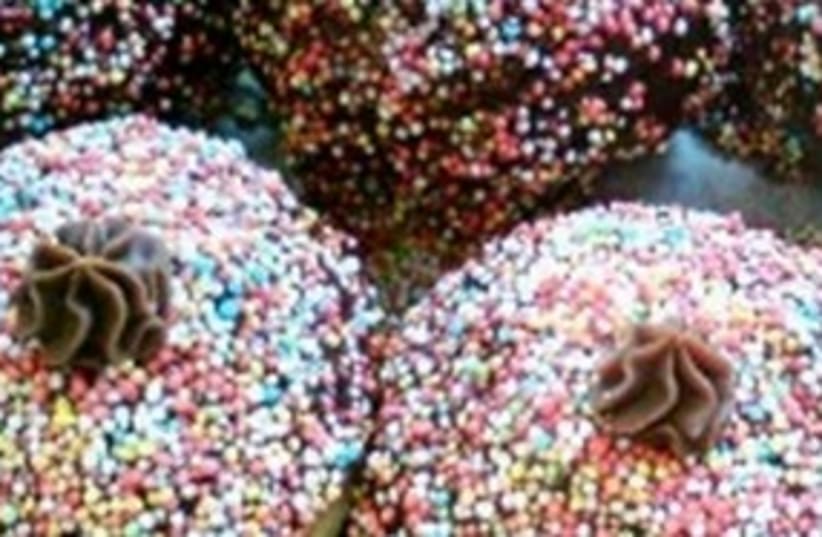1. Take a menorah tour Lighting candles in the ultra-orthodox neighborhood of Mea Sharim in Jerusalem. It's time to wander along the paths, alleyways and winding streets of Nachlaot and the Old City's Jewish Quarter neighborhoods. These two areas around Jerusalem's downtown are small in size, but packed with families who take their Hanukkah candle lighting very seriously.Nearly any Jerusalem neighborhood will offer an array of lit menorahs, but Nachlaot and the Jewish Quarter offer the most "shamash for your shekel." (The shamash is the candle used to light all the other candles on the menorah.)2. Jerusalem Lights the Night, Tower of David Museum It's a sound and light show Jerusalem-style, and it's perfectly suited to Hanukkah, the holiday whose theme centers around light. The walls of the ancient citadel serve as the stage for this nighttime show that uses sight and sound to stimulate the audience.
5. New Year's Eve, Sylvester style
The Hebrew term for New Year's Eve is "Sylvester," taken from the name of the saint for whom the holiday was originally celebrated. It happens that he was an anti-Semite - a Roman pope who prohibited Jews from living in Jerusalem. But his name is the Israeli title for January 1.It may have been coined by those who emigrated from Western countries and needed a new moniker for the holiday, since the Jewish New Year is celebrated in the fall.Interestingly, to hold onto their kashrut license, it is forbidden for most hotels to hold New Year's Eve or Sylvester celebrations, although bars and clubs have been hosting them for years, given that Israelis love any excuse for a party.6. Saturday cholent lunch As the temperature falls, heavy comforting foods like cholent make an ideal meal.Along with winter come the heavy, comforting foods that warm one's insides. Cholent is the Ashkenazi version of a meat and bean stew that is known as hamin among Jews of Eastern origin.By any name, this slow-cooked stew of white beans, brisket, barley and potatoes (some trickle in a little beer), or a hamin's chicken (or beef), chickpeas, potatoes and whole eggs, will leave you replete and aching for a nap during the cold, dark afternoon.7. (Hopefully) playing in the snow When the snow falls in Jerusalem everything grinds to a halt, and playtime begins. Occasionally, once every few years, it may snow during a Jerusalem winter. The white stuff magically falls on the streets of the holy city, with the children hoping it will be hard and not too wet, and that the temperatures will remain low enough for the snow to last, and dust the streets, trees, cars and sidewalks for days.Of course when it does, everything grinds to a halt. School, work, traffic, Egged buses, stores, you name it, all are closed down. There appears to be only one snow plow in Jerusalem, and truthfully, who wants to go to work or school when there's a scant day of snow play to be had?Once the snow has fallen, playtime begins, usually including friends from outside the city who want to join in the fun. So wrestle on the boots, wrap your sneaker-shod feet in plastic bags and wind a few scarves around your neck. Then head out to the parks, streets, backyards and highway dividers for some snow-time play.8. Lupine Hill in the Ella Valley Every February, the lupines start to bloom in Jerusalem's hills. When it's still the dead of winter elsewhere and just a smattering of rainy days are still due in these parts, the winter wildflowers begin to bloom and Israelis flock to see them.There are fields full of red and purple poppies and anemones, tiny yellow wildflowers and the queen of them all, the purple lupine. One small hill in the Ella Valley, just outside Jerusalem, is known as Lupine Hill, or Givat Hatermosim in Hebrew.It is to here that people flock each February, walking among the clusters of lupines studded with bunches of anemones and the occasional crocus, and breathing in the fresh scent of wildflowers watered by the winter rains.9. A Kube Fest A bowl of kube soup - meat dumplings served in a red beet or sour green okra broth - is a wondrous thing in the winter, when your bones may be aching from the cold and only a hot bowl of soup will warm you inside and out.One of the masters of the kube is Jerusalem's Ima Restaurant, at the base of Agrippas Street, just down the block from the Mahane Yehuda food market that offers a selection of restaurants serving up kube, both in soup and fried in oil.Ima once held a Kube Festival each January. But with its own Kube Bar set up in the nearby market, there's no need, because now it's a Kube Festival all year long.10. Succulent Strawberries For Jerusalemites, winter is strawberry season. Just like the seeming unlikeliness of spring flowers in the dead of winter, so it is with strawberries, which are only available during the Israeli winter season, rather than in spring or summer.
